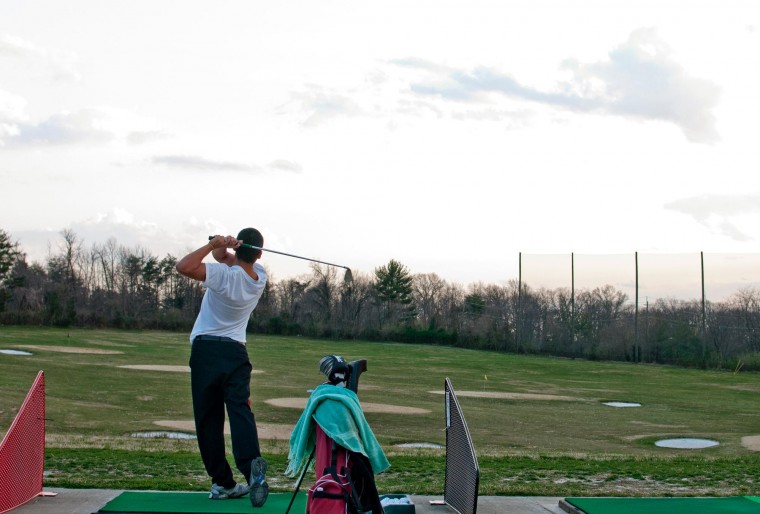
The university’s 54-year-old golf course received new grass and drainage systems during a 2009 renovation.
A developer is considering whether to propose building an “academic village” that would replace the university golf course and alter traffic flows.
The plan to develop a village that would include academic, athletic and recreational amenities could potentially ease traffic on Route 1 by linking the campus and Interstate 95.
Though Brian Gibbons — the CEO of Greenberg Gibbons, the firm that presented university President Wallace Loh with a preliminary idea in July — said his firm is still deciding whether to move ahead with the proposal, several groups and activists have mobilized to oppose a potential development project.
Loh declined to discuss the potential proposal, other than to say, “If [Gibbons] wants to submit a formal proposal, I’d be very open to reviewing it.”
If Gibbons, a university alumnus and parent of a current student, does submit a proposal for the development, which would cost more than $100 million, it will be made public to the university community for extensive review and comment, he said.
“Route 1 is already a failing highway now, and it is projected to get much worse,” Gibbons said in a statement to The Diamondback. “This will make it ultimately impossible to attract or approve high-quality amenities near the campus.”
But supporters of the golf course say an invaluable asset will be lost: the open green space inside the Beltway hosts 70 fundraising events and about 35,000 rounds of golf each year.
The 150-acre course is not part of the athletic department’s budget, but rather that of the division of student affairs. Both the men’s and women’s golf teams play on the course, which was founded in 1959.
The golf course is one of 14 in the state that is a Certified Audubon Cooperative Sanctuary, meaning it excels in six environmental considerations: environmental planning, wildlife and habitat management, chemical use reduction and safety, water conservation, water quality management and outreach and education.
“You don’t see a lot of green space around College Park other than the golf course,” said Norman Starkey, chair of Friends of the University of Maryland Golf Course. “The detriment would be the loss of a valued green space, a tremendous asset.”
The Maryland Golf Course Coalition, an offshoot of Friends, formed in July after Loh wrote a letter to Gibbons that indicated the university would consider the “unsolicited” proposal. The coalition, which Starkey also chairs, opposes any proposal that would reduce the acreage of the course.
Starkey said the coalition has requested a meeting with Loh, who will not meet with community members until the firm submits a proposal that has received comment and input from the community. However, coalition members have met with several local and state leaders, including Gov. Martin O’Malley last week and House Speaker Michael Busch (D-Anne Arundel) on Monday.
The potential proposal comes in the midst of a larger development project along Route 1. Officials have plans to build a hotel and conference center and redevelop Knox Road with upscale housing and retail, and they are speaking with several landowners throughout College Park.
“We want to attract new and improved developments on Route 1 and near the campus,” Loh wrote in a July 8 letter to Gibbons. “Such progress is essential to advance the university’s mission.”
Without the golf course, opponents of the development argue, the university and local community would lose an increasingly rare space to host events as well as “scenic, rolling-life land and a wildlife sanctuary,” Starkey said.
“Wholly apart from golfers, lots of people use it, and it’s a tricky business to say we’re going to do away with it,” said Jim Harris, a member of MGCC and former arts and humanities college dean. “It’s almost entirely green space. For an urban university, getting rid of that is a major issue.”



